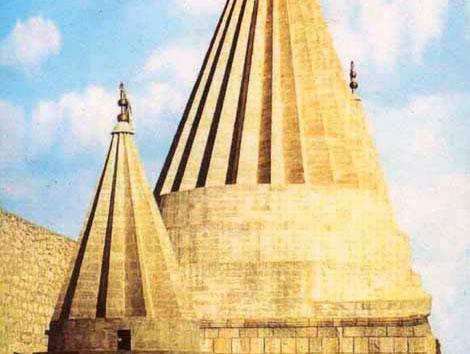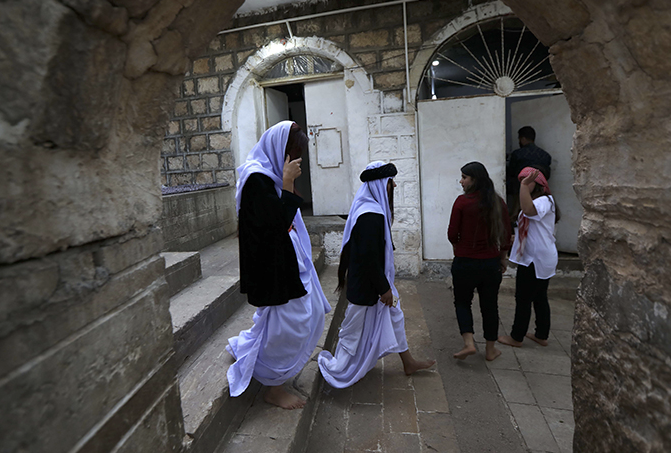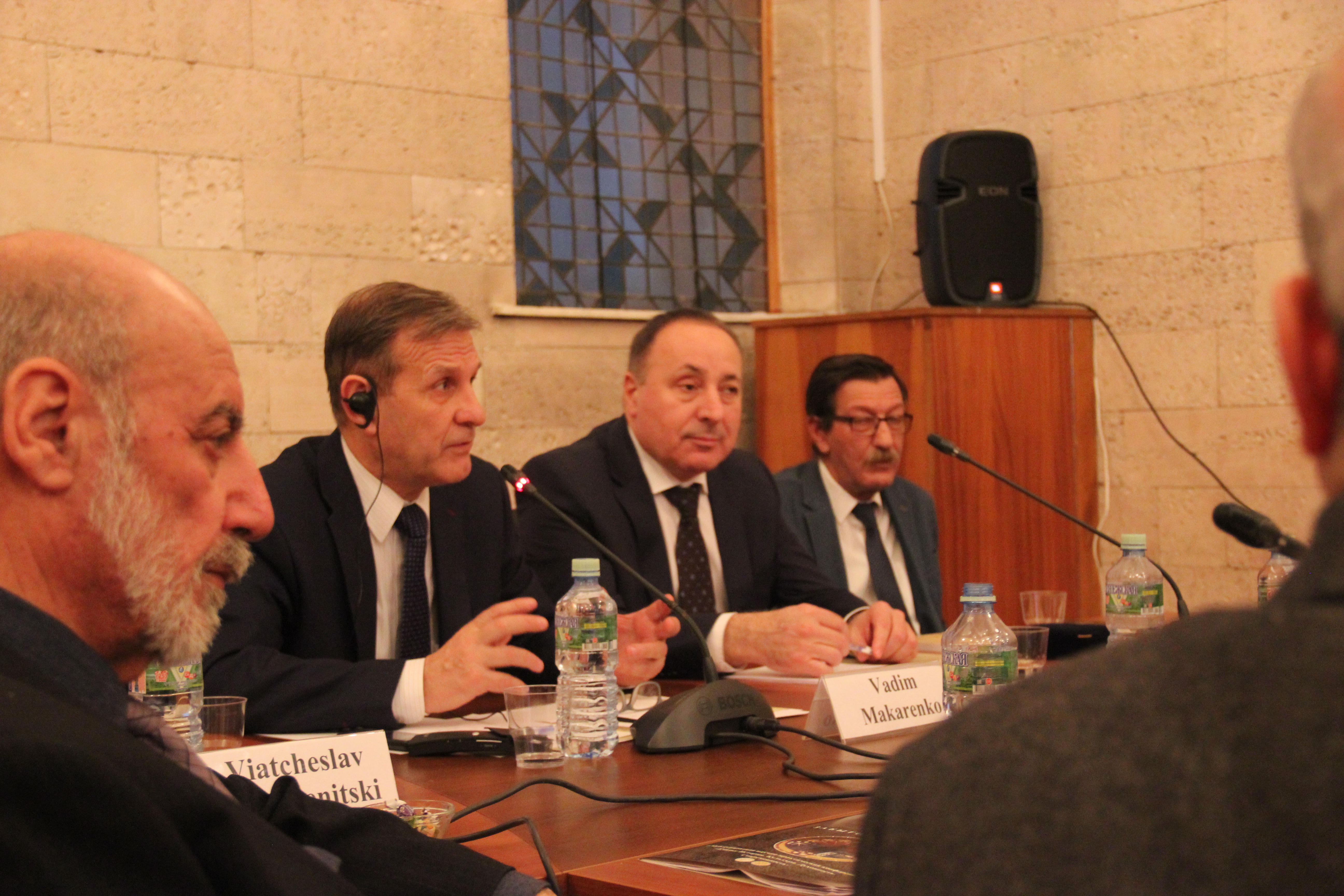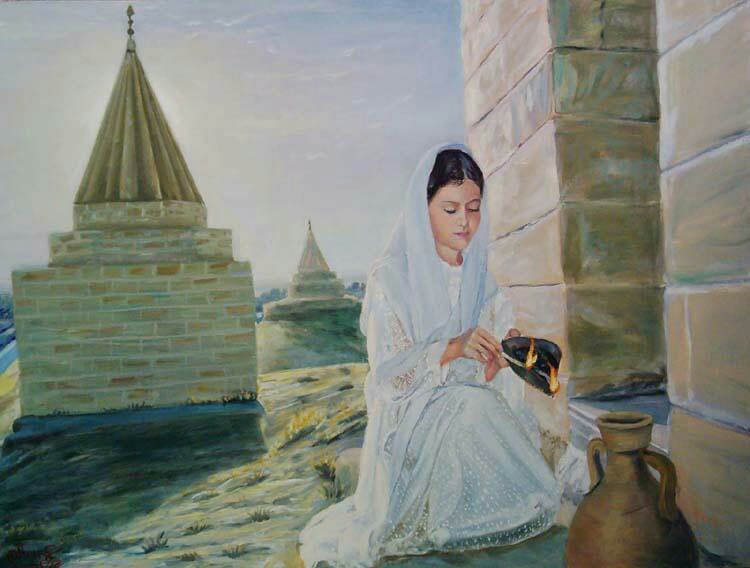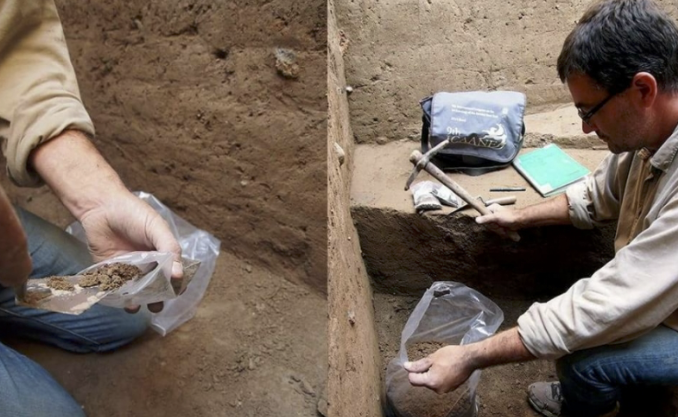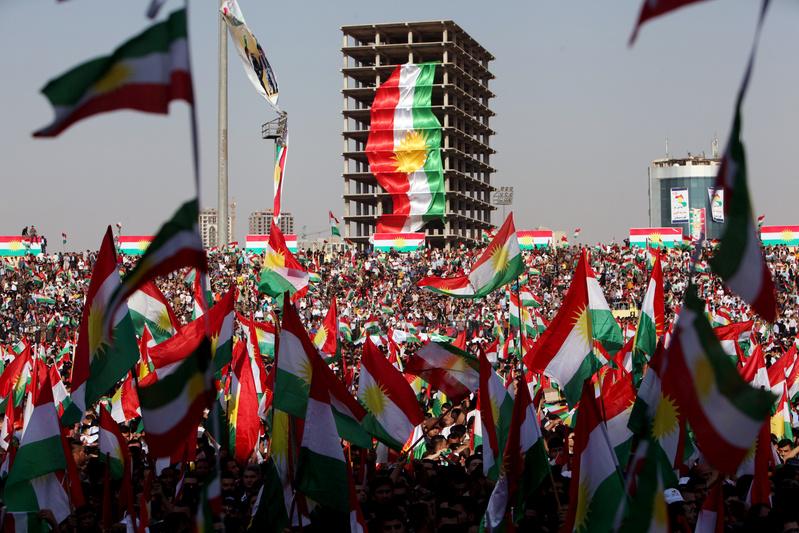Society's structure
As their ancestors, Yezidis adhere to the ancient Aryan caste structure. Today, it is considered as a caste-theocratic society where the power of spiritual leaders often exceeds secular power.
The highest secular and spiritual power belongs to the monarch (mir). The official title given to the head of all Yezidi is "The Mir Sheikhan of all Yezidis." The only way to refer to him is by "Your Holiness". The power is absolute - it combines secular, religious and judicial power. The Mir is elected for life. ‘San’ is inherited, and marriage is possible only with a representative of the princely family.
The caste system supports the identity of the social structure of the Yezidis. Religious canons and taboos by priests are strictly controlled and obligatory for all adherents of religion. Perhaps, thanks to this factor, Yezidism has been preserved to the present almost unchanged.
Traditionally, Yezidis are divided into two endogamous castes - secular and spiritual. Each caste has its own canons, rights and duties. Unlike many other world religions, in Yezidism, clergymen become not at will or after receiving appropriate education, or consecration, but by birth. Murids cannot become priests, and priests cannot go into the mundane estate. Status, both clergy and laity are inherited.
Marriage is allowed only within one class. Marriages between representatives of the clergy and murids are categorically forbidden, and are considered a great sin. In addition, the spiritual caste has its limitations - the sheikhs and pirs have no right to be related to each other, and there are additional restrictions on marriage and among these estates - not all genera of sheikhs and pirs can marry each other.
The secular caste
Secular caste are murids (laity). Murid is a follower of Yezidism, a member of a community that lives a "secular" life. Murids, make up the bulk of the parishioners and are divided into numerous tribal groups that join together in tribal unions. Murid, as an adherent of the Yezidi faith, takes a prayerful engagement in worship. At home, he can perform all the services given in the scriptures, except those that are the exclusive prerogative of the sheikh or pirs. Only in case of emergency, in the absence of a clergyman (deadly danger, funeral), the mureid can perform the sacrament of baptism.
Murids are free to choose a marriage within their caste. Marriages with gentiles are forbidden. According to the postulates of religion, the Yezidis can only be those who are born of the mother and father of the Yezidis. Children born in mixed marriages are not Yezidis. A Yezidi, who accepts another religion, is no longer considered a Yezidi.
Spiritual caste
The spiritual caste in Yezidism has three hierarchical degrees of priestly service, the origin of which is derived from Sheikh Adi. These are sheikhs,pirs and lower clergy. The representatives of each of the three degrees of the priesthood differ among themselves "according to grace", bestowed by the Lord.
The head of the spiritual caste is Baba-Sheikh (Holy Father). Baba Sheikh does not have absolute power, performs only organizational and representative religious functions, monitors observance of religious orders and rites, and also directs divine services in the church in Lalish.
Sheikhs and pirs within the caste are equal to each other "by grace," which gives them the right to a strictly defined range of liturgical powers and actions (the village priest is no different from the Baba-sheikh, the head of the clergy). The difference is only in terms of administrative seniority and honor.
Despite their rank and holy origin, the priests are also murids and also have their own sheikh and pirs. Religious injunctions apply to them as well as to all laity.
Sheikh - a representative of the highest administrative rank, head of the divine service, directs religious rites and rituals.
Sheikhs build their ancestry to the sheikh Adi and as his successors, have the fullness of liturgical and administrative authority within their flock (Muridhany).
Sheikhs are divided into three genera: Adani, Shamsani and Katani. Adani is a Sheikhsin sheikh (Sheikh Hasan), Katani is Shekhubakra (Sheikh Abu Bakr), Shamsani is associated with four Shams al-Din brothers, Fahr al-Din, Sad al-Din and Nasr al-Din.
All the genera of the sheikhs are equal, but the Shekhsin clan takes a more honorable position, since they are the direct descendants of Sheikh Adi. They are called peshimas - this dignity is assigned only to the Sheikhs of the Shakhsin clan. During the divine service, festivals and rituals, the peshimas stand before the rest of the clergy.
In addition to the prohibitions on marriage common to all Yezidis, in the sheikhs caste, marriages between the three above-mentioned families are inadmissible, they are possible only between representatives of the same genus.
The main duty of the sheikh is to preserve religion, monitor the observance of the canons of the Yezidi religion by the members of the community, visit the house of every Yezidi of his community, exhort them to pray aloud and secretly and perform all religious rites, and participate in all religious rituals.
No religious ritual or event can pass without a sheik: birth, baptism, wedding, funeral,reconciliation etc. They also serve at the grave of Sheikh Adi in the temple of Lalish.
A distinctive feature is that the sheikhs wear a white robe, a white hat and a black belt.
Pir is a priest, an independent and plenipotentiary representative of the community. This order in the Yezidi religion has a broad meaning - a mentor, teacher, patron, guardian. Pirs, along with the sheikhs (sometimes without them), perform religious functions and participate in ritual ceremonies.
Pirs are divided into 40 genera. The main genus among the pirs is the genus - Hasmaman. The head of all the pirs is Pira chel pir.
The duties of the pirs include the dissemination and clarification of the canons of the Yezidi religion in their community, assistance in conducting home education for the families entrusted to them, and participation in the main religious rituals: preaching, explaining the foundations of religion, visiting families of members of the community and ordaining them to the priesthood, teaching them the word of God. At these "lessons" the pirs enters into the confidence of its lay people, is interested in the needs and problems of families, helps in resolving conflict situations, praying with them, teaches them the canons of religion and fosters in them the desire to fulfill religious and family responsibilities.
The pir also has the authority to consecrate other priests - sheiks and kavals, and grant them the priesthood.
Intergenerational marriages in the estate of pirs (that is, forty genera) are allowed, except for marriages with pirs of the Hasmaman clan.
Unlike the sheikhs, the pirs are traditionally dressed in black clothes.
They are followed by representatives of the lower clergy - the second degree of the hierarchy: spiritual guides (kavals), assistants of sheikhs (fakirs), and fortunetellers (kochaks), etc.
Kaval is a spiritual mentor, a connoisseur of hymns, prayers and rituals, a preacher of religion, a collector of donations. They have the duty to store and pass on to future generations an oral religious tradition. The group of Kavals once or twice a year, by decision of the Spiritual Assembly of the Yezidis of the world, visits places of compact residence of the Yezidis and collects donations for religious needs and the Lalish Temple. As a confirmation of their authority, they necessarily carry a sacred attribute - sanjak (a copper statue with a peacock image).
Kavals can marry murids, but murids do not have the right to marry daughters of kavals.
Fakir is an assistant to the sheikh, a leading ascetic life. This is a special group of priests engaged only in the service of God and not participating in other rituals, except caring for the graves, especially behind the mausoleum of Sheikh Adi.
Fakirs can be sheikhs of the Shahubakr and Shekhsin clans, pirs from the Omarhali clan, as well as selected members of the murids, pious ordinary Yazidis who want to devote themselves to serving God.
Fakirs are considered martyrs for their faith, because for the sake of faith and the salvation of mankind they are subject to severe trials. Fakir does not drink or smoke, does not sleep in bed and does not sit on a chair. Fakir is highly respected by all Yezidis without exception. His words should be listened to, he cannot be contradicted and even raised his voice.
Fakirs wear a black dress called "hark". Headpiece is a black turban "kullik", girded with a red belt, called "mahakk", to which is attached a yellow ring "hadith". On the neck wear a thin thread, called "current Yazid," which according to legend, like a gallows all the time should warn him from committing a sin. The fakir's clothes are sacred, so when they meet with him, the Yezidis try to touch and kiss her. He does not change clothes until it comes to complete unfitness. After death, the fakir is buried with his clothes.
Kocak is a predictor. They can become every Yezidi possessing miraculous abilities, with the blessing of the Baba-Sheikh.
In marriage, kocaks can enter only within their class.
Kochaks release long beards, wear a white turban and white clothes, a red or black woolen belt with a copper consecrated ring.
Bava Havan - this dignity is assigned to the sheikhs of the Amadin clan. The duties of Bava Havana include observing the rituals and instruction of the Yezidis (corresponding to the post of pastor in Christianity).
Bava Chavish is a priest who vows celibacy and leads an ascetic life; Devotes himself to the service of faith and resides permanently in the Lalish Temple. They can be Yezidis from any caste.
Fakraya is a nun-celibate, a leading ascetic life. It can be a yezidi female from any caste. The elder nun-fakray is called the "Kabani" or simply hostess .

